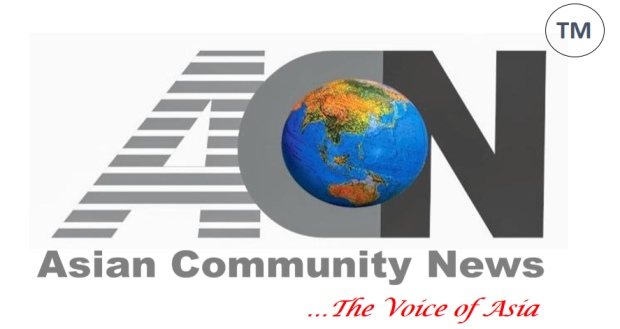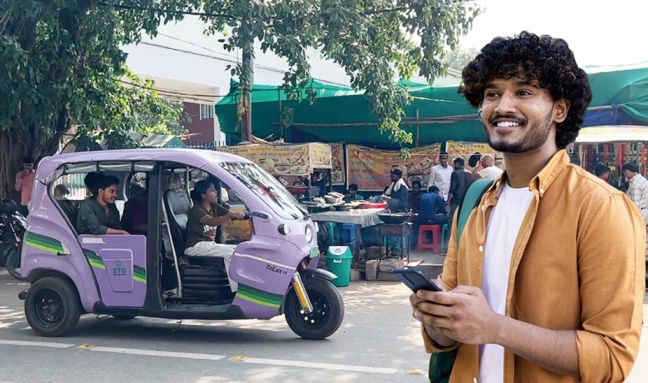Japanese giants Panasonic, NEDO, JICA join hands to support IT-enabled e-rickshaw project at Delhi metro stations
The pilot project with 40 e-rickshaws driven by women helps ease traffic congestion and reduce CO2 by promoting last-mile connectivity at five select DMRC metro stations in New Delhi.
NEW DELHI: Japan’s conglomerate Panasonic Holdings Corporation (Panasonic HD)with the support of the New Energy and Industrial Technology Development Organization (NEDO), Japan International Cooperation Agency (JICA), Transport Department, Government of NCT of Delhi has begun a demonstration operation (pilot run) of an IT system that supports last-mile transportation using electric autorickshaws (three-wheelers). For nine months until June 2024, the cloud and mobile application SOJO developed by Panasonic HD will be operated to collect data on the number of passengers and operating efficiency of electric rickshaws.
Titled ‘International Demonstration Project on Japan’s Energy Efficiency Technologies’, it is for e-mobility (electric vehicles) with the aim of improving passenger convenience and transportation efficiency in the section from the nearest station to the destination or from a point of departure to the nearest station. As part of it, Panasonic HD, and ETO Motors, a local cooperating company, have jointly completed the introduction of the IT system and started demonstration operation on 17th October.
 A ceremony to start the demonstration operation was held in New Delhi today in the presence of the officials from Panasonic HD, NEDO, the Delhi government, the Delhi Metro Rail Corporation (DMRC), the Embassy of Japan in India, and JICA.
A ceremony to start the demonstration operation was held in New Delhi today in the presence of the officials from Panasonic HD, NEDO, the Delhi government, the Delhi Metro Rail Corporation (DMRC), the Embassy of Japan in India, and JICA.
The pilot project with 40 e-rickshaws driven by women drivers helps ease traffic congestion and reduce CO2 by promoting last-mile connectivity at five select DMRC metro stations in New Delhi.
In her address, Ms. Kyoko Hokugo, Minister, Embassy of Japan in India said, “I heard in this project many women drivers are employed. I appreciate very much ETO Motors, the collaborating company of this project, which takes this initiative. Of course, it helps a lot to those female drivers economically and gives them more skill to work, but not only that, I think it breaks the conventional idea that the driver of a rickshaw is a man, and may lead the people’s mind change that women can also work in the profession which traditionally is considered as men’s work.”

“And I heard just today that women who don’t have driving licenses can also be employed. They will be trained get licenses and become drivers. They could drive even after they quit their job here. This project serves a lot for the empowerment of women too. I appreciate it very much,” the Minister added.
Tomoyuki Iwakuma, project leader, Panasonic Holdings Corporation, Ashish Kundra, Principal Secretary, Transport Dept of Delhi, Ms. Kyoko Hokugo, Minister, Embassy of Japan, Dr. Shuji Yumitori, Executive Director, NEDO, Yasumichi Murase, Director of Mobility Solutions, Panasonic Holdings Corporation, Deepankar Tiwari, Vice Chairman of ETO, Sirajul Haque, Executive Director (Last Mile Connectivity) of DMRC, Mitsunori Saito, Chief Representative & Director of JICA’s India Office, Manish Sharma, Chairman, Panasonic Life Solutions India, and Yoshiro KAKU, Chief Representative (India), NEDO were present on the occasion.

Demonstration operations of the IT system have begun at four Delhi Metro stations: Kalkaji Mandir, Okhla NSIC, Nehru Enclave, and Nehru Place stations. In the future, various data will be collected from electric rickshaw passengers from each station to their destination.
The total cost of the demonstration operation, including the study stage, is over 200 million yen, of which over 100 million yen will be subsidized by the NEDO. Panasonic HD developed the cloud and apps used for the demonstration operation. The cloud will manage electric rickshaw operations, dispatch, and battery information. Three types of apps are available: one for ETO Motors, a local electric rickshaw operating company, one for rickshaw drivers, and one for rickshaw passengers. Through each app, ETO Motors will be able to manage its vehicles and batteries, drivers will be able to exchange information regarding passenger waiting status and vehicle charging status, and passengers will be able to check available vehicles, make ride reservations, and make cashless payments.
With India’s economic growth, traffic congestion and air pollution have become social problems in urban areas. Although metro expansion is progressing, many people are still traveling by private car or ride-sharing services such as Ola and Uber, which is exacerbating problems of traffic congestion and air pollution problems.

Dr. Shuji Yumitori, Executive Director, of NEDO, said, “I believe that Japan and India’s cooperation towards a carbon-neutral society can be deepened through various activities under this partnership, and this NEDO project can be one of the keys. I would like to mention the importance of PDCA for deepening our cooperation with a future-oriented approach, that is Passion-Decision-Connection and Activation. Not Plan-Do-Check-Action.”
In order to increase the number of metro (DMRC) passengers, it is important to create a system for the “first mile,” from users’ homes to the boarding station, and the “last mile,” from the disembarking station to their destination. In December 2022, NEDO and the Delhi government signed a cooperation agreement (LOI) regarding this demonstration project. Later, in the same month, Panasonic HD, which received a grant from NEDO, signed a project agreement (PA) with ETO Motors of India, which manufactures and operates electric rickshaws.
Panasonic HD will collect and analyze data on the number of passengers and operating efficiency of electric rickshaws. The cloud and apps will be updated from time to time to improve passenger convenience and transport efficiency. Utilizing the knowledge of operation management, driving route optimization, and battery management that HD has, we can specifically optimize electric rickshaw-sharing routes to attract more passengers increase fare income, and improve vehicle maintenance by predicting breakdowns in advance. We will work on ways to reduce operating costs by reducing the amount of time the vehicle cannot be moved.
In the long term, the aim is to reduce traffic congestion and greenhouse gas emissions by reducing car travel and increasing metro travel. Regarding greenhouse gas reduction, it is expected to reduce carbon dioxide (CO2) by approximately 260 tons per year.
Related article: Japan’s NEDO (New Energy and Industrial Technology Development Organization) helping India realize carbon neutrality
NEDO, which is subsidizing Panasonic HD with about half of the cost of the demonstration project, hopes that the results of this project will be returned to Japan and lead to strengthening Japan’s industrial technological capabilities.
ETO Vice Chairman Deepankar Tiwari said that the ETO was running electric rickshaws in nine cities in India. He hoped to expand this initiative to many more cities in the future hinting that the company will continue collaborating with Panasonic HD even after the demonstration.
The inauguration ceremony was attended by Sirajul Haque, Executive Director (Last Mile Connectivity) of DMRC. “The whole solution needs to be integrated into one app, such as adding metro-related functions to the same app as the demonstration drive. The app needs to be simple and convenient,” Hawk said.
Mitsunori Saito, Chief Representative & Director of JICA’s India Office, who has continued to support the Delhi Metro, said, “Delhi Metro is doing well in transporting passengers every day, but its last mile connectivity is not working well, and it has not reached its full potential. It hasn’t been able to perform to his full potential. If we can improve last-mile connectivity, we can double metro ridership.”



